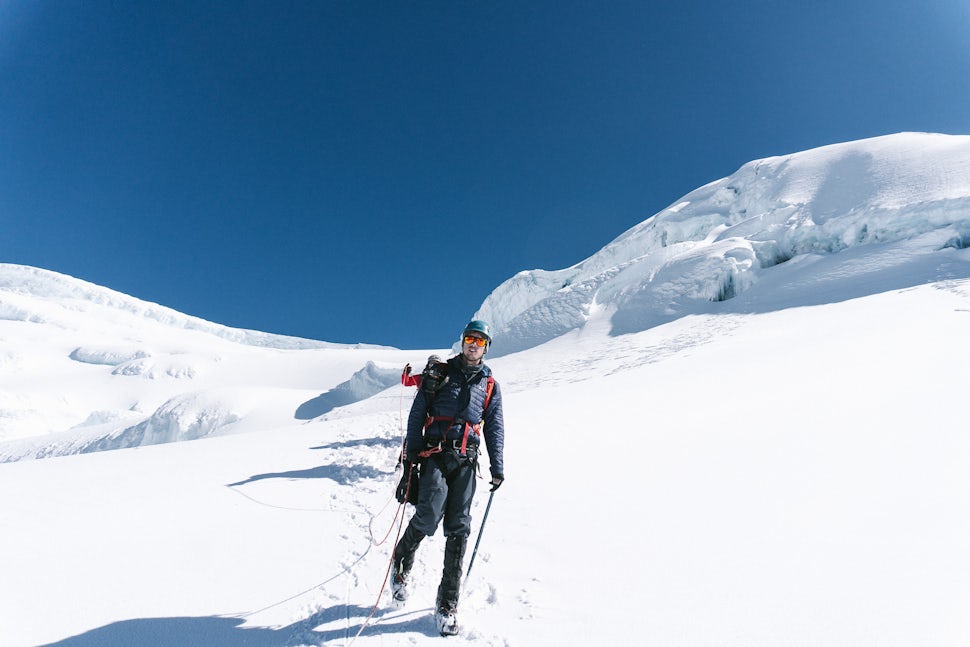Snow Blindness: Why You Should Never Forget Your Sunglasses
A snow-capped, glacier-filled, 18,000 ft peak is not a fun place to lose your vision

While climbing Volcan Antisana in Ecuador (18,714 ft), our guide told us of a recent ascent he did with a friend. They successfully reached the technical south summit, and were on their way down when suddenly, his partner couldn’t see. He had to traverse hours of glaciated, crevasse-filled terrain carefully guiding his now-blind climbing parter. Everyone was fine, but how did something like this happen? His partner forgot her sunglasses.
When climbing at high altitudes, good sunglasses are one of the most important things you can have. While most folks tend to think of how hard it is to breathe, or how cold it can get, UV rays at altitude can also be incredibly deadly. Fresh snow reflects about 80% of the UV radiation compared to say a beach, which reflects only 15%. Ultraviolet rays, strengthened by the reflection off white snow can cause serious sunburn, and in some cases, snow blindness.
Snow blindness occurs when your eyes (specifically your cornea) get sunburnt. Although the effect won’t be felt for several hours, these tiny blisters on your cornea will eventually cause pain and swelling, and prevent you from being able to see. Although it heals relatively fast (under 48hrs in most cases) it’s not a situation you want in the mountains, especially at the altitudes where snow-blindness is most common.
How do you prevent snow blindness?
First off, don’t forget your sunglasses. At higher altitudes, use sunglasses that transmit only 5–10% of visible light, and side shields to prevent reflected rays from getting in the sides. While climbing in South America, I used Revo Traverse, which not only look awesome, but performed great at 20,000 ft. In my opinion, they're the most stylish glacier glasses on the market, and are comfortable, with great eye coverage to boot. In the event of an emergency, you can craft some makeshift glasses by cutting a small slit in dark fabric or tape and tying it around your face.
This is the ridgeline of Volcan Antisana. Not a place you want to go blind, that's for sure.
Not only are these glasses super handy, they look rad too.
No sunburnt eyes on the summit of Chimborazo (20,564 ft)!
Check out the Revo Traverse here.
For a breakdown on more glacier glasses in the market, including the Traverse, check out my friend Chris Brinlee's article here.
We want to acknowledge and thank the past, present, and future generations of all Native Nations and Indigenous Peoples whose ancestral lands we travel, explore, and play on. Always practice Leave No Trace ethics on your adventures and follow local regulations. Please explore responsibly!
Do you love the outdoors?
Yep, us too. That's why we send you the best local adventures, stories, and expert advice, right to your inbox.










